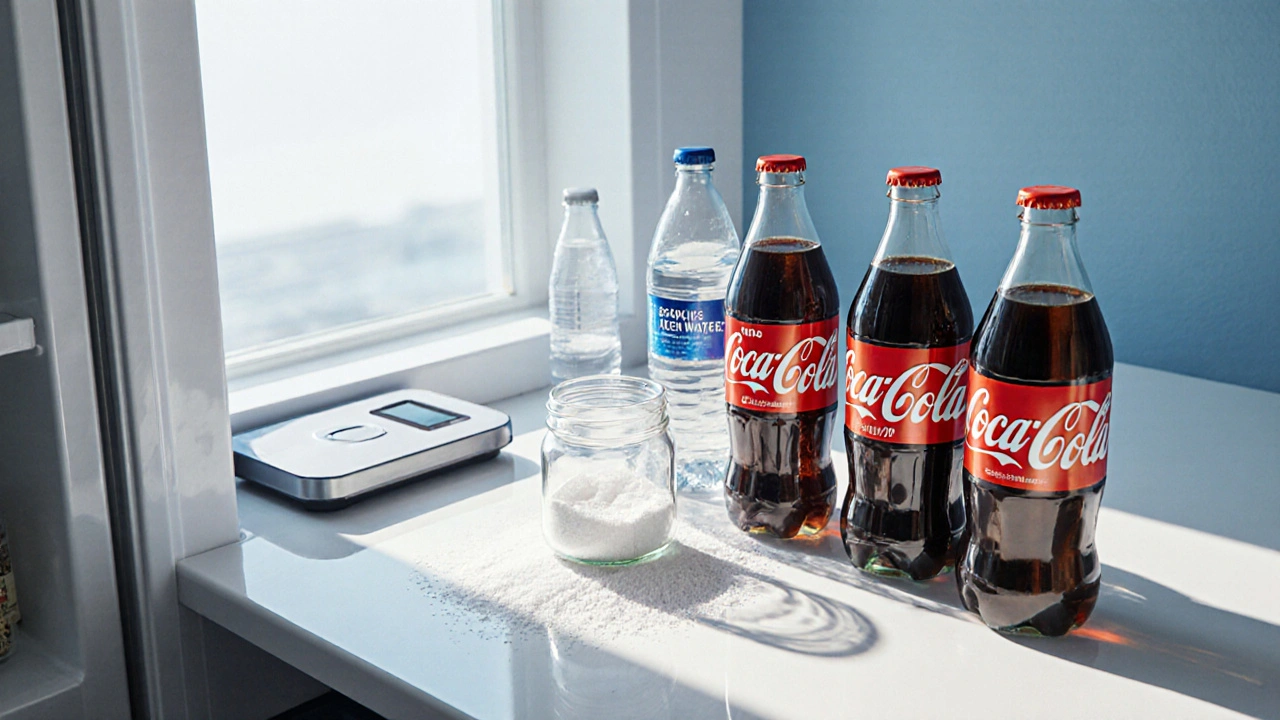Low Calorie Soda: What You Need to Know
When you reach for low calorie soda, a carbonated drink that contains little to no calories, usually by replacing sugar with artificial sweeteners. Also called diet soda, it offers a sweet fizz without the energy spike of regular sodas. The sweet taste comes from artificial sweeteners, low‑calorie sugar substitutes like sucralose, aspartame, or stevia that trigger sweet receptors without adding calories. Many low calorie sodas also contain caffeine, a natural stimulant that can boost alertness but may affect heart rate if overconsumed. Together, these ingredients let manufacturers create a beverage that satisfies cravings while staying under a calorie threshold.
Why Low Calorie Soda Matters for Health
Choosing low calorie soda can be a practical step for anyone watching their weight. Because the calories are near zero, swapping a regular soda for its low‑calorie counterpart can shave off 150‑200 calories per can, which adds up over weeks. This calorie gap can support weight loss, the process of reducing body mass through a calorie deficit without giving up the fizzy habit. However, the caffeine punch in many diet sodas can raise blood pressure in sensitive individuals, linking blood pressure, the force of blood against artery walls, to regular consumption of caffeinated diet drinks. Understanding this relationship helps you balance the boost you get with the potential cardiovascular impact.
Low calorie sodas have become a staple in the modern beverage market. Brands are launching new flavors, adding functional ingredients like electrolytes, B‑vitamins, or even natural fruit extracts. This trend reflects a consumer shift toward low‑calorie drinks, any beverage formulated to deliver flavor with minimal calorie content. The rise of sugar‑free alternatives also ties into broader public health campaigns aimed at reducing added sugar intake. As a result, the shelves are stocked with options ranging from classic cola‑type diet sodas to experimental blends that cater to specific taste preferences.
Despite the appeal, controversies linger around the safety of artificial sweeteners and the long‑term effects of chronic caffeine intake. Some studies suggest certain sweeteners may alter gut microbiota, while others find no adverse outcomes at typical consumption levels. Caffeine, when consumed in excess, can lead to jitteriness, sleep disturbances, or heart palpitations. The key is moderation: most health authorities recommend limiting caffeine to about 400 mg per day, roughly the amount in four cans of a caffeinated diet soda. By staying within these limits, you can enjoy the benefits of low calorie soda without incurring the common drawbacks.
Below, you’ll find a curated collection of articles that dive deeper into each of these topics. Whether you’re curious about the science behind artificial sweeteners, want tips for using low‑calorie soda in a weight‑loss plan, or need to understand how caffeine interacts with your body, the posts ahead offer clear, evidence‑based guidance. Explore the range, pick what fits your life, and make smarter beverage choices today.
Discover which sodas are truly low‑calorie, low‑sugar, and nutritionally smarter. Learn to read labels, avoid common pitfalls, and pick the best soda for health in 2025.

